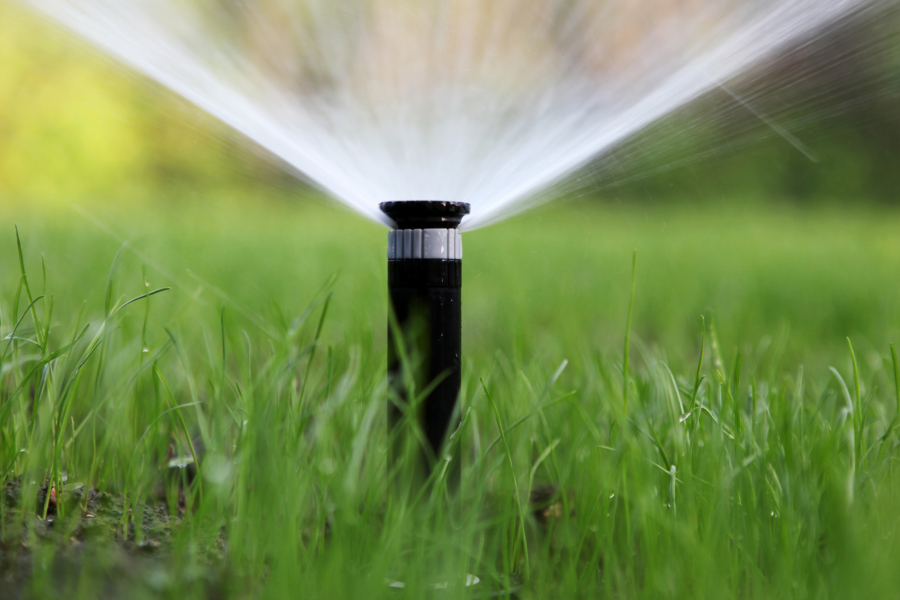Raise a glass to smart irrigation
June 28, 2023

July is Smart Irrigation Month, an initiative by the Irrigation Association to educate and inform us about the importance of smart irrigation to water management and conservation.
So what is smart irrigation? Great question. It’s a similar concept to smart heating or energy management in buildings, where technology is harnessed to make these systems more efficient.
In this case, it’s all about using smart controllers to determine how best to utilize water and labor to keep plants and lawns growing and healthy, while conserving the resources that enable our beautiful landscapes.
In simple terms, the controllers tell the irrigation when to turn on and off. The really smart part is the way they use data and software (alongside some specialized human knowledge) to determine optimum watering times and durations.
When they’re configured, smart irrigation systems take into account weather, the plant materials they will be watering, the type of soil in the area and the topography of the specific areas of the landscape. This is all to do with ET. Not the lovable little alien guy; we’re talking about evapotranspiration, the science of water movement through plants and soil.
ET incorporates the rate of evaporation of water and the rate at which water moves through plants, delivering the nutrients they require. Smart irrigation systems use a combination of complex ET calculations and information about local weather conditions (gleaned from real-time measurements and online weather forecasting) to very accurately configure how much water is required to ensure plants are neither under- nor over-watered.
Those smart controllers can be accessed and managed remotely, allowing irrigation management teams to fine tune their watering schedules and be notified if there is a problem in the system, such as a leak due to a damaged sprinkler head, or even a mainline break.
These leaks can mean the loss of thousands of gallons of water and damage to plants if they are not identified and fixed quickly.
Further, smart controllers have the ability to help pinpoint problems, saving time, which enables better utilization of the people working to keep the irrigation system up and running.
All of this is important because it can lead to significant reductions in water usage: up to 40%, studies have shown.
In a time when we face ongoing drought conditions, water restrictions and concerns over the future of our access to water resources, it’s clear to see why smart irrigation is needed.
And it’s being used around us all the time. For example, in the City of Vista, smart irrigation is a key element of the City’s 360-degree approach to providing and caring for green spaces.
Vista works with its water district to ensure its efficient weather-based irrigation schedule allows it more flexibility in times of watering restrictions, so that trees and turf get the water they need, without waste.
Over in Oceanside, smart irrigation forms part of the City’s enlightened approach to water management, which also includes the Pure Water Oceanside recycled water purification initiative.
Smart irrigation allows public green spaces to thrive, which is great for locals and visitors. It’s also crucial to the maintenance of plants that provide a natural barrier to erosion, and prevent stormwater pollution.
That’s significant, because stormwater pollution can lead to cities issuing health warnings, and limiting access to the ocean means a drop-off in visitor numbers, which in turn hits the local economy hard.
The innovation continues. My company, Calsense, has just announced plans to apply AI (artificial intelligence) alongside nearly 40 years of irrigation expertise, to allow users to ask questions and get back industry best-practice answers, as and when they need them.
Further down the line, we’ll introduce predictive analytics that can predict when an irrigation system is likely to experience an issue, like a master valve failing, and address it before it occurs.
These and many other advanced future features are designed to make the process of irrigation increasingly efficient and by extension, sustainable.
There are many examples of the ways smart irrigation serves as a marriage of nature and technology, guided by real-life human experiences, which is helping us to preserve the Earth’s most precious resource: water.
So this July, during Smart Irrigation Month, take a moment to appreciate the beauty smart irrigation enables.
This blog originally appeared here.
